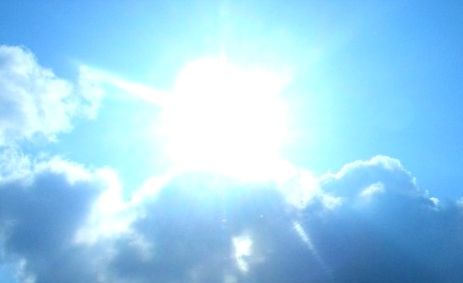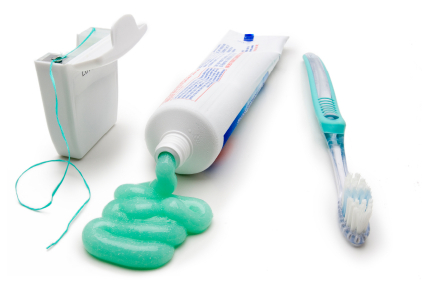 Triclosan: a toxic chemical that shows up in the damndest placesIn Checkout Line, Lou Bendrick cooks up answers to reader questions about how to green their food choices and other diet-related quandaries. Lettuce know what food worries keep you up at night.
Triclosan: a toxic chemical that shows up in the damndest placesIn Checkout Line, Lou Bendrick cooks up answers to reader questions about how to green their food choices and other diet-related quandaries. Lettuce know what food worries keep you up at night.
———————
Dear Grist,
I have been getting contradictory information about triclosan. Organic Consumers Association says danger, beware, don’t use. Other sources say no problem. I trust you. Precautionary principle says don’t use. What do you say?
Love,
Steve
Dear Steve,
I say, the good old precautionary principle has a point this time. In fact, I’d make like a teenager looking to impress friends in a souped-up car: flee triclosan, leaving nothing behind but a screech, a cloud of dust, and skid marks. Oh, and while you’re barking your tires, don’t forget to flip the bird in the rearview mirror. Trust me, this anti-microbial chemical deserves it.
So what is it? Triclosan is a leftover from the germ-phobia of the ’90s, when people were trying to sterilize everything in sight. People don’t seem as intent as they used to on buying anti-microbial everything, but triclosan just keeps hanging around.
The watchdog Environmental Working Group (EWG) says it’s “nearly ubiquitous in liquid hand soap and dishwashing detergent” and also found in “toothpaste, facewash, deodorant, a host of personal care products, and even mattresses, toothbrushes and shoe insoles.” Mattresses? This creepy stuff even has the nerve to get in bed with us! Triclosan is also often found in chopsticks, because … your don’t want to be exposed to your own germs while eating Chinese food. Or something.
But get this: it fights germs no better than plain soap–and yet its widespread use may be creating “super germs”!
And make no mistake, it is creepy stuff. As the EWG put it:
Triclosan is linked to liver and inhalation toxicity, and low levels of triclosan may disrupt thyroid function. Wastewater treatment does not remove all of the chemical, which means it ends up in our lakes, rivers and water sources. That’s especially unfortunate since triclosan is very toxic to aquatic life.
Studies show that it disrupts thyroid function in both rats and harms tadpoles, to boot.
It’s too bad triclosan is so common in personal care products, such as toothpaste and shaving cream, because it can combine with chlorine in tap water to form chloroform, a probable human carcinogen. (As is the case with oh-so-many industrial chemicals, Further Studies Are Necessary to “prove” the bad effects of triclslan plus chlorine. Don’t hold your breath.)
Still not convinced? From our sinks and potties, triclosan takes a free ride down the drain into our waterways, where it wreaks serious havoc with aquatic life. Read all about it in this excellent Beyond Pesticides fact sheet(PDF). Speaking of aquatic life, a recent study found triclosan in the blood of dolphins.
Of course, Steve, there is that no problem camp you mentioned. According this enough-about-those-dolphins-already press release from the Soap and Detergent Association, the low traces found in dolphins just proves that, thanks to science, “You can find just about anything you want to just about anywhere if you’re looking for it.” Hmm. Uh, okay then. Let’s look for triclosan in human blood, shall we?
Turns out that, even when avoided, the stuff has a disturbing tendency to linger. Chances are that it’s in your blood and pee or your wife’s breast milk right now, so you might want to get a restraining order.
For you, Steve, I called up Dr. Rick Smith, executive director of Environmental Defense Canada and co-author of the forthcoming book Slow Death By Rubber Duck, which is already a bestseller in Canada. In the book, Smith and his colleague Bruce Lourie imbibed and absorbed seven common toxic substances, including triclosan. The results were surprising at the outset because Smith had measurable levels of triclosan in his blood before the experiment despite the fact that he had been “scrupulously avoiding this thing for years.”
How triclosan got into Smith’s body is anyone’s guess, but he happened to notice that his garden hose was “Microban protected.” (Microban is one of Triclosan’s brand names)
“I was showering my little tomato plants and chives that we use in our egg omelets with a triclosan garden hose,” he told me. “So I don’t know if it came from there, but it’s likely that this stuff is just ubiquitous now.”
So how much more triclosan was in Smith’s blood after two days of using triclosan-infused toothpaste, shaving cream, body wash and deodorant?
“My levels spiked by 2,900 times,” he said. Check out the video footage of the experiment here.
Steve, I can tell by the way you sign your letters that you are a loving person, but I think it’s time to get tough. Take Smith’s advice and avoid triclosan rigorously: “It’s a classic example of a pointless product foisted upon us by money-grubbing companies,” he said. “It’s just that simple. There’s no evidence that this chemical is improving our lives. The extent to which it’s being used in frivolous ways is just mind boggling.”
To give triclosan the heave-ho, read labels and get savvy. The Environmental Working Group’s has a great guide to Triclosan-free products. For good measure, here’s a list of products that do contain the nasty stuff.
Good luck. One more thing. How to keep your life reasonably germ-free without resorting to toxic chemicals? Like your mama probably told you, plain old soap and water does the trick. As with everything, moderation!
Love back at you,
Lou



